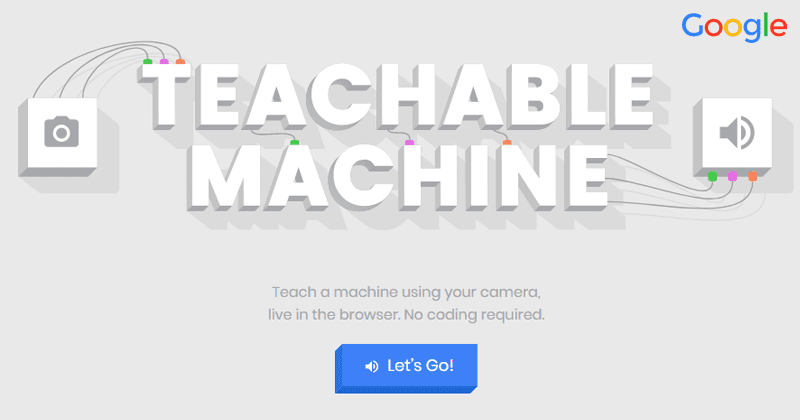With machine learning, you can teach basic concepts to a computer. For example, it can differentiate between pictures with your face, or with your hand. The Teachable Machine experiment allows you to test this in practice. Authorize access to your computer’s camera, then click and hold the green button – let it capture at least 30 images. Now, raise your hand on the left side of the camera, then click and hold the purple button. Again, let it capture at least 30 images. Ready: You taught the algorithm to detect your hand: raise it, and the site will display a dog’s GIF; lower it, and it will show a cat. You can go further and teach the algorithm to detect your right hand: lift it to the camera, capture at least 30 images, and that’s it. In this case, the site will show the GIF of a rabbit.
The Teachable Machine can also react with sounds. For example, you can play an “air guitar” and get applause when you’re done. The site explains that it does not make facial recognition, that is, it will not differentiate your face from another person – but you can learn to detect faces in general. It will also not guess the name of objects but can differentiate between an apple and a banana, for example, they have different colors and formats.
Image recognition is done by a neural network, software inspired by how our brain works. First, it creates a set of “neurons” that send messages to each other. Then this network receives a training: it tries to solve a problem in several iterations, strengthening the connections that lead to the correct results. So this network is ready to solve problems on its own. Teachable Machine uses the open source library deeplearn.js, which allows you to run machine learning models locally in the browser. I tested the Teachable Machine in several browsers. It had the best performance on Chrome, which is expected since it was created with the help of Google. The experiment works in Firefox, but a bit slower. It did not run on Microsoft Edge and did not request camera access at Opera – so it did not work. You can even run it on your smartphone, but the mobile version is “highly experimental” and will consume enough battery power. So, what do you think about this? Simply share your views and thoughts in the comment section below.
Δ


